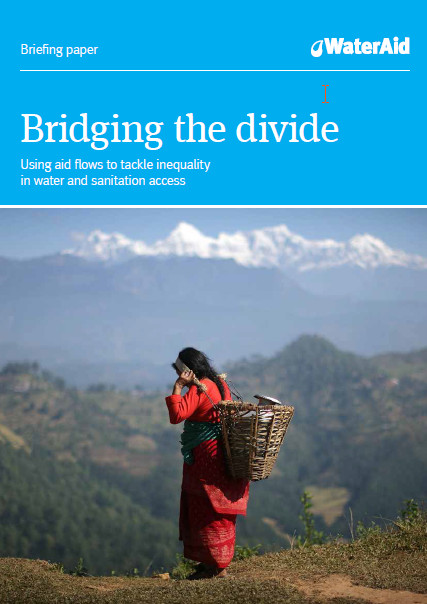Bridging the divide: Using aid flows to tackle inequality in water and sanitation access
 |
Réorienter l'aide publique au développement pour réduire la fracture de l'accès à l'eau et à l'assainissement
rapport Mar 2014 ; 16 pages
Ed. WaterAid - London
Téléchargeable sous format: PdF
Téléchargeable chez l'éditeur
Résumé:
Le rapport montre que l’aide internationale pour le développement n’atteint pas ceux qui en ont le plus besoin, et exacerbe les inégalités entre pays au lieu de les réduire.
WaterAid Burkina Faso demande à ce qu’un objectif dédié à l’accès universel à l’eau potable et à l’assainissement soit inclus dans les objectifs de Développement durable post-2015, pour que chaque habitant de la planète ait accès à ces services de première nécessité d’ici 2030. Il devient nécessaire et urgent de doter notre pays d’un document de Vision 2030 du secteur de l’eau et l’assainissement. Abstract:
This briefing paper identifies the major inequalities that persist in the water and sanitation sector today. It contrasts these inequalities with the latest data on Official Development Assistance and shows that the greatest volume of aid rarely goes to the places where there is the greatest need.
• Jordan, Mauritius and Montenegro all have access levels above 90% for both water and sanitation, yet they receive US$855, US$588 and US$256 respectively each year for each person without these essential services.
• Conversely, many least developed countries receive minimal amounts of support, despite their fragility and high levels of need. Madagascar and Somalia receive less than US$1 each year for each person without water or sanitation.
• This imbalance exacerbates existing inequalities rather than reducing them.
• Over the past decade, donors have promised substantial amounts of aid that have not materialised.
Bridging the divide analyses the countries in which water and sanitation poverty is at its highest, and shows that, as international governments turn their attention to ending extreme poverty by 2030, there is a need to address significant fault lines in the way global aid to water and sanitation is targeted and delivered.
Mots clefs: |
accès à l'assainissement (CI) (DT) (OP) (ope) , accès à l'eau (CI) (DT) (OP) (ope) , coopération (CI) (DT) (OP) (ope) , finance (CI) (DT) (OP) (ope) |
Editeur/Diffuseur: |
|
WaterAid - London - Royaume Uni |
En cas de lien brisé, nous le mentionner à communication@pseau.org